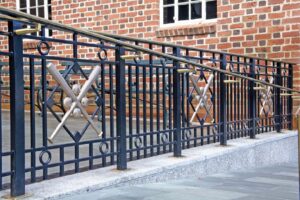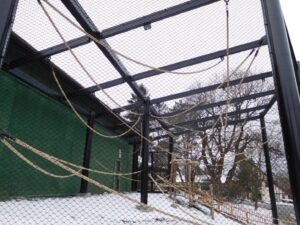The Mario M. Cuomo Bridge stands as a monumental feat, marking the largest bridge project in New York state history and ranking among the most substantial design-build projects in the United States. This architectural marvel replaces the aging Tappan Zee Bridge, spanning the Hudson River to connect Tarrytown and Nyack, situated approximately 30 miles north of New York City. The former 60+ year old bridge, despite recent refurbishments, had become a traffic bottleneck, accommodating 140,000 vehicles daily. Considering the escalating maintenance costs and the need for a long-term solution, the decision was made to construct a new structure.
A key element in the bridge’s undercarriage support structures, including walkways, electrical conduit supports, safety railings, scuppers, and walkway supports, was the application of hot-dip galvanizing for corrosion protection.
Constructed by Tappan Zee Constructors, LLC (TZC), a consortium comprising top design, engineering, and construction firms, including Fluor, American Bridge, Granite, Traylor Bros., HDR, Buckland & Taylor, URS, and GZA, the new 3.1-mile twin-span cable-stayed bridge was designed with a 100-year lifespan. The collaboration with the New York State Thruway Authority and the State Department of Transportation enabled the TZC to complete the bridge within a strict 32-month schedule and a budget of $3.98 billion. The first span opened in August 2017, with the remainder set to open in 2018.
The Mario M. Cuomo Bridge, boasting eight traffic lanes, four emergency lanes, and cutting-edge traffic monitoring systems, serves to streamline traffic between southern and western New England. The bridge includes a dedicated lane for commuter buses, a bicycle and pedestrian path, and provisions for potential mass transit options in the future.
Notably, hot-dip galvanized steel plays a pivotal role in the bridge’s construction. Approximately 6,000 precast panels on the approaches, 973 panels in the main span, 68 300-ton pile caps, and 134 12-foot girder assemblies incorporate hot-dip galvanized rebar for reinforcement. The 43 pairs of concrete piers, each reinforced with galvanized steel cages, and the 700 miles of metal strand stay cables crucial for bridge support are also coated with hot-dip galvanizing. Even the concrete pylons/towers, standing at 410 feet and reinforced with galvanized steel cages, exemplify the extensive use of galvanized steel. These towers, set at a five-degree angle to maintain cable tension and achieve an open structure, are reinforced by two 650-ton steel crossbeams supporting the road deck.
Furthermore, all undercarriage support structures, including walkways, electrical conduit supports, safety railings, scuppers, and walkway supports, underwent hot-dip galvanizing for corrosion protection. Collaborating with Gerdau, CMC, and Harris Rebar, New Jersey Galvanizing, and Hubbell Galvanizing produced 42,000 tons of hot-dip galvanized reinforcing steel for the bridge. The New York State Thruway Authority, recognized for prioritizing safety and reliability, played a crucial role in selecting hot-dip galvanizing for the rebar. Although stainless steel rebar was initially considered for the 100-year design life, a presentation by the American Galvanizers Association convinced TZC and NYSTA that galvanized rebar could achieve the desired lifespan with significant cost savings.
The implementation of hot-dip galvanizing ensures the protection of reinforcing steel from corrosion, a critical consideration given the bridge’s proximity to water. Galvanized rebar, with its high chloride threshold, mitigates corrosion and prevents pressure build-up that often leads to spalling. In total, over 59,000 tons of hot-dip galvanized rebar contribute not only to the structural integrity of the Governor Mario M. Cuomo Bridge but also guarantee its 100-year design life, underscoring the indispensable role of galvanized steel in this spectacular and enduring structure.




